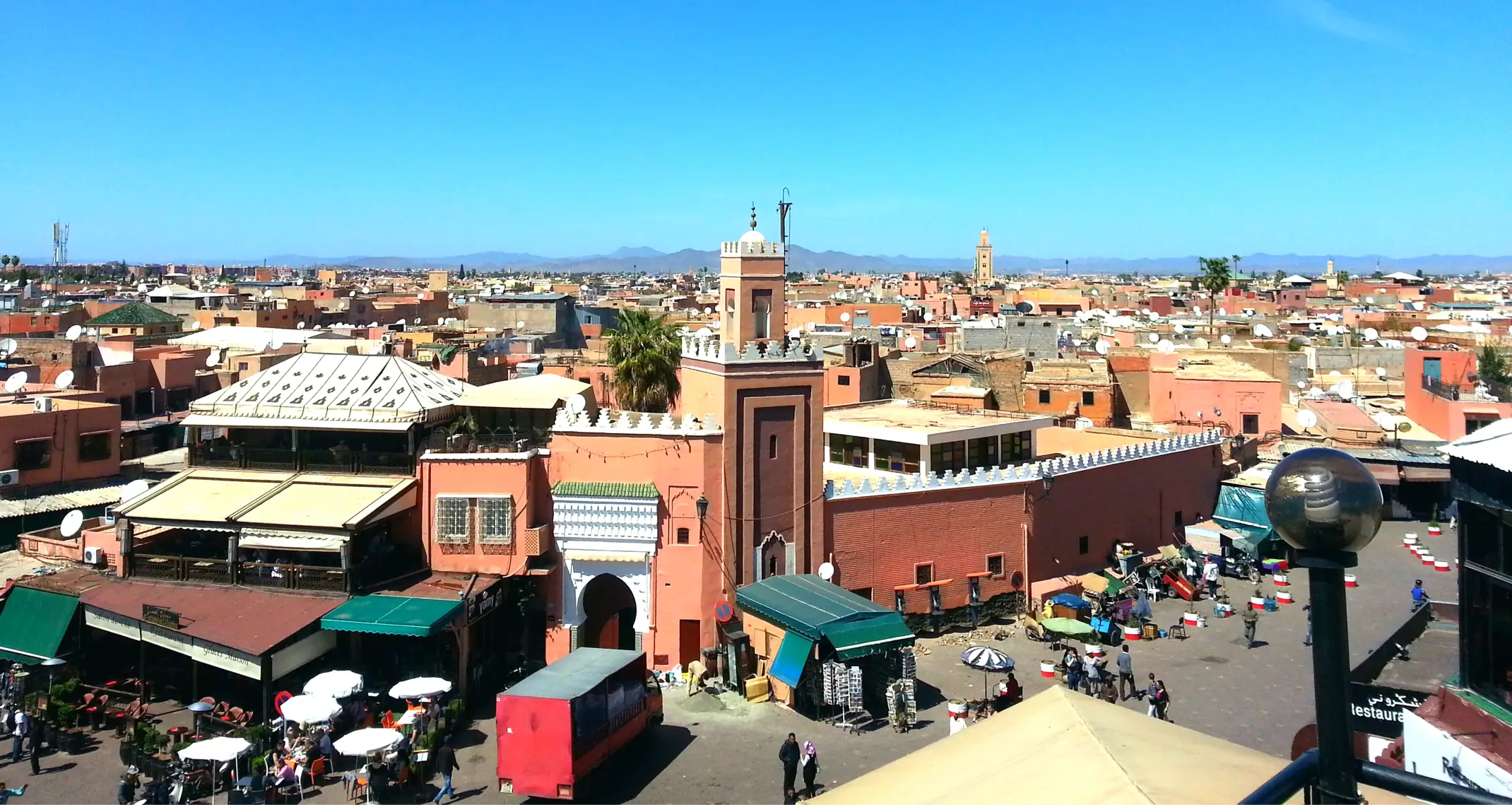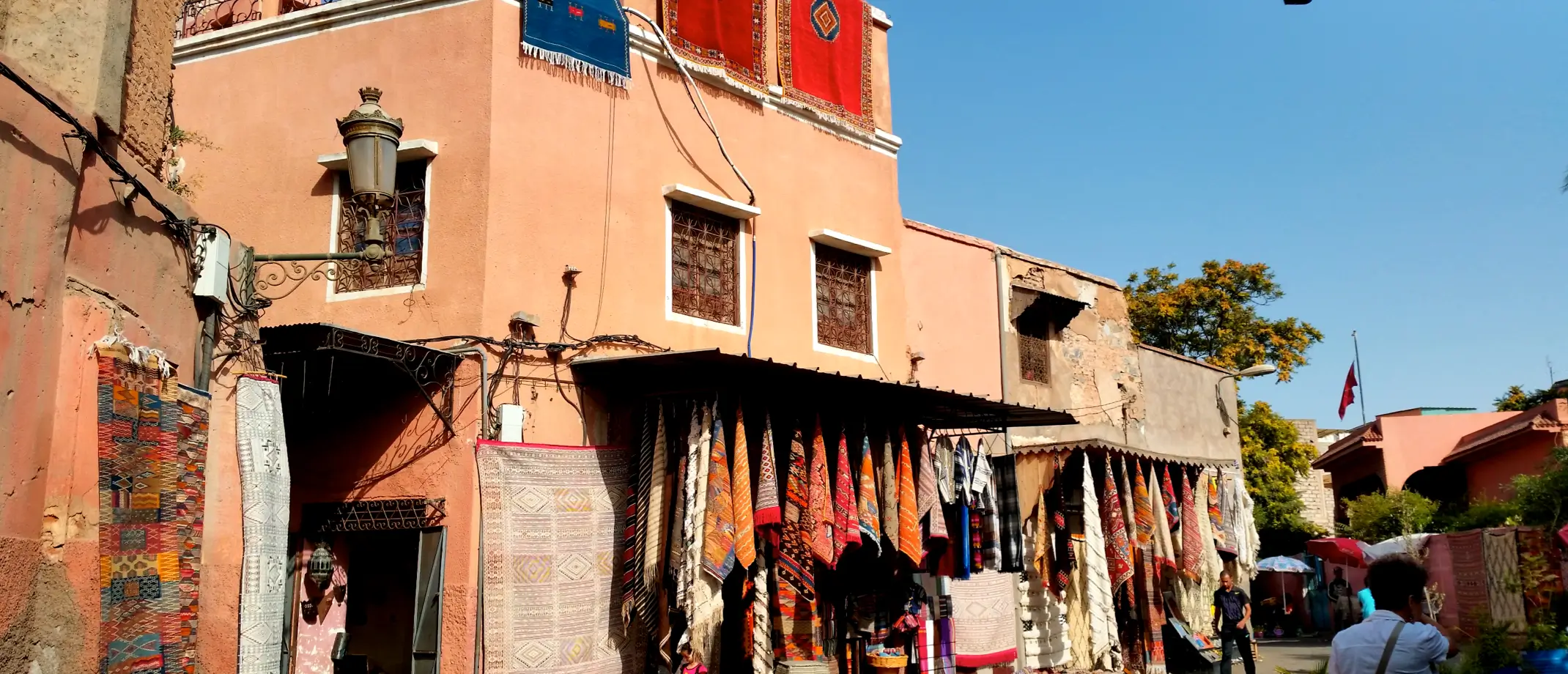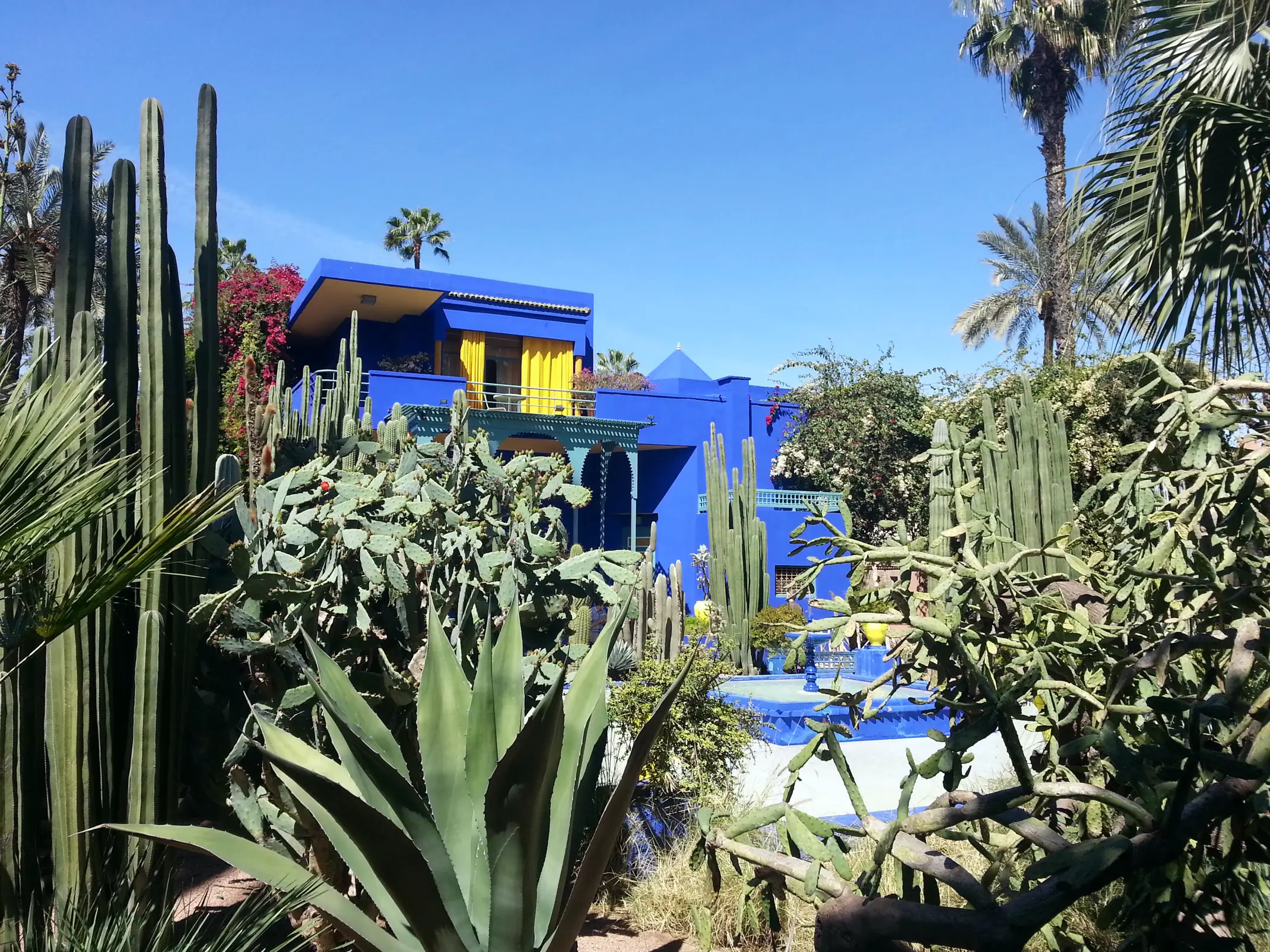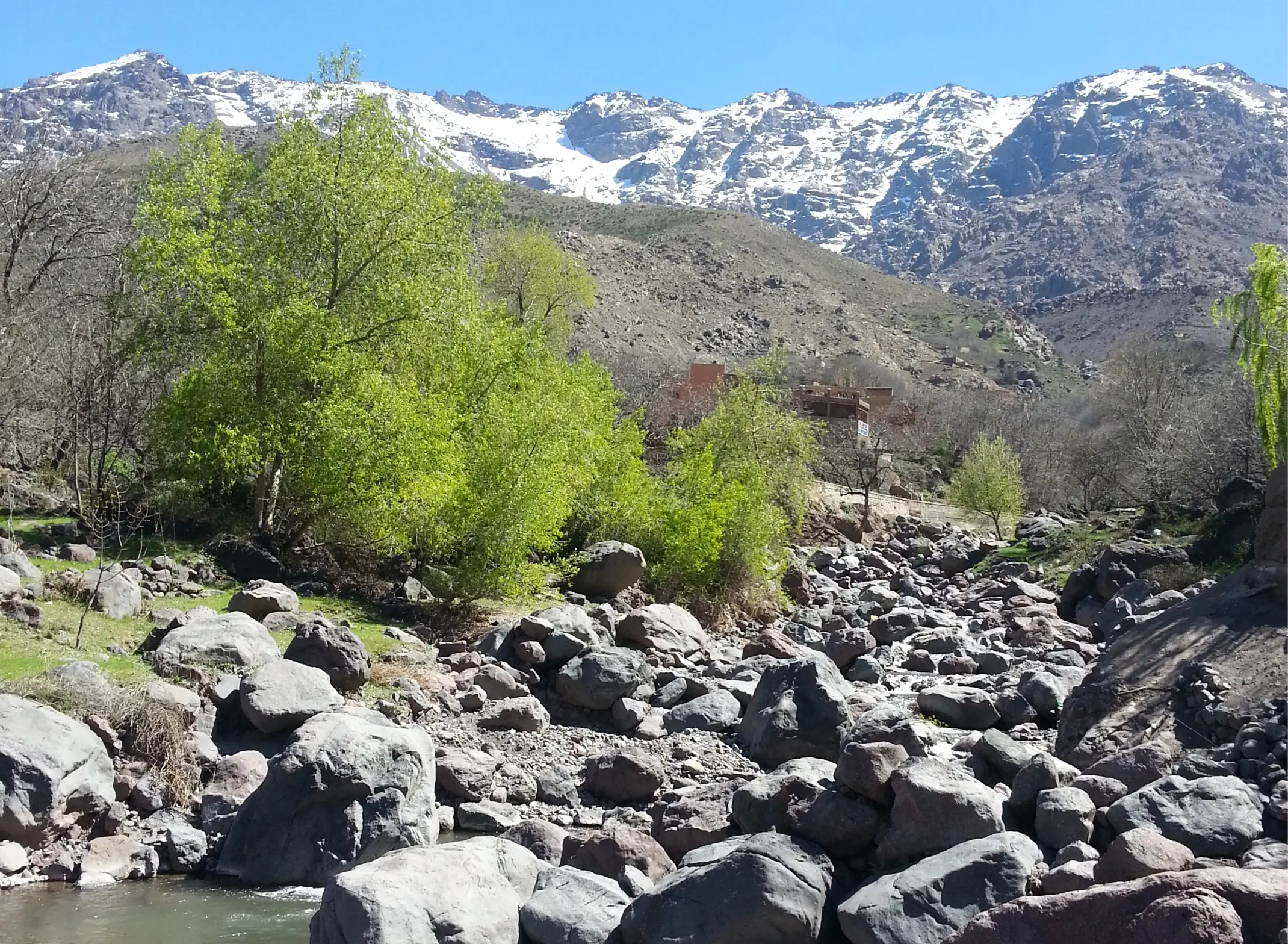Jonathan Price
After working as a music producer for theatre, ballet, film, television and in other popular music idioms, Jonathan helps our team create the most outstanding videos and photos.
I have been lucky, over a period of some years, to spend extended periods of time in the wonderful and exciting country of Morocco, especially Marrakesh. My visits took in The Riff mountain region in the North around Oued Lou and Chefchaouen, Marrakesh and the Atlas mountains in the central region, and south to the edge of The Sahara desert at Zagora. The regional cultural variations in dress, customs, food and architecture that I witnessed were fascinating to behold.

My first touch down was at Marrakesh. It was November and I left the UK weather very cold and wet. Upon arrival I was met at the airport by my hosts, who were also wearing winter clothing, coats, hats, scarves and gloves, it was 25 and sunny. I was later to find out that regional cities are colour coded with Marrakesh being red. I was to stay with a family in the suburbs of the city where I would observe the true nature of Moroccan life.
We arrived at the house where I would be based and from the outside it didn’t look too exciting. But once through the door a whole new vista presented itself. It had a central covered courtyard sporting brightly coloured Islamic tiling and arbours around one side with chaise lounges where one can rest and drink tea.
On the other side was a kitchen and long dining table. Various doors led off to bedrooms, a prayer room and a bathroom. The house had four storeys accessed by a stone spiral staircase, which was also completely covered in beautiful Islamic patterned tiling.
When I commented that there were not many windows I was told that the walls were thick to keep the inside of the house cool during the extreme summer heat and that windows would only let that heat into the house.
The second floor had various bedrooms with old wooden doors. They came off of a walkway that skirted the central courtyard. I stood and looked down to the ground floor and then up to the floors above and wondered at the space that my hosts lived in day to day. Arabic culture sure knows how to live graciously. The next floor housed a self-contained apartment, again with lovely wooden features and its own courtyard seen through tall windows. The courtyard had various palms and other flowering plants that were a delight. From that courtyard stone steps accessed the roof, which had awnings covering various comfortable seating areas from which I could look out over the neighbourhood. Staying at this house I would explore the city. But first eat and get acquainted with the family.
It was wonderful to witness the respect shown to the Father as various family members arrived at the dinner table. Each one in turn kissed his hand. Then the food was placed on the table on large platters.
A varied array of vegetable dishes, rice, tagines, salad and small rye bread loaves that tasted delicious. Being a vegetarian in Arabic countries is so much easier as vegetable dishes are exactly that and plentiful.
My first trip out in the town was to Jemaa el-Fnaa which is the main square in the centre of the town. A truly exciting place with snake charmers, traditional music and dancing, stalls selling all kind of exotic ware and of course food. There are quite a few fresh juice stalls making truly fresh juices in front of you eyes, oranges, lemons, grapefruit, limes, pomegranate, melon and other fruits. They were really very refreshing in the hot climate.
 Image Credits: Jonathan Price
Image Credits: Jonathan Price
The square is on the edge of the Old Medina which is a labyrinth of narrow walkways filled to the brim selling just about everything you can think of. It is the oldest part of the original town and was described to me as a market. As a European I expected a street with stalls selling clothing and such but was I in for a surprise. It is a city in itself and very easy to get lost in.
There are certain areas of expertise such as Silversmiths, that will make any design you give them, Goldsmiths, who will do the same, carpet sellers, musical instrument shops, antique shops, the famous leather pointed slippers, herbs, spices, incense and so much more.
 Image Credits: Jonathan Price
Image Credits: Jonathan Price
I stopped by a man and his wife that were grinding Argan seeds with a big stone wheel. They were making them into patties, for skin scrub, and bottling the oil. Argan is native to Morocco and the best thing I’ve found for skin care, and it was cheap as chips. Later I came across an alley of artisans making clothing, shoes and bags from old rubber tyre inner tubes. It sounds cheap but the designs and patterning was extraordinary. They made real quality products.
Watch out for signs saying Riyadh, which originally were small palaces. These days many have been turned into BnB’s and hotels. These are normally above ancient carved wooden doors set often in plain mud walls.
You would never know there was anything much behind them. After knocking one is led into luxurious courtyards that are open to the sky, filled with palm trees, water features, fountains and arbours where one can recline and rest from the hustle n’ bustle of the hive like medina outside. Usually someone will bring you tea and sweetmeats and that’s before you have even looked at the rooms.
The bedrooms are usually arranged around second and third floor mezzanines that look over the courtyard. There is always a rooftop, with awnings and more chaise lounges where one can drink tea, smoke shisha and look out over the rooftops.
I wandered around the Old Medina for hours fascinated by the whole experience. My Hosts said that it was getting late in the afternoon and that it was best not to remain in the Medina after dark. They admitted to me that they had never penetrated the whole way through it.
On later visits, by myself, I took a compass to navigate my way in and out. By the end of my stay there my hosts said that I probably knew the Old Medina better than them.
 Image Credits: Jonathan Price
Image Credits: Jonathan Price
Next day I went back to Jemaa el-Fnaa as nearby is a house formerly owned by Yves Saint Laurence. On his death it was bequeathed to the town. It is a wonderfully bright blue house with a most extensive cacti garden, of which I was particularly interested as I used to be a collector myself. There is so much to see and enjoy in Marrakech and from there I was to take a bus over the Atlas Mountains to the Sahara Desert.
 Image Credits: Jonathan Price
Image Credits: Jonathan Price
Marrakech markets, though inland, offer a variety of fish including local freshwater species like carp and trout, as well as sea fish like sardines and mackerel, brought from coastal areas. The selection may vary seasonally.
In Marrakech, you can learn to cook a variety of traditional Moroccan dishes like Tagine, a slow-cooked stew with meat and vegetables, Couscous with seven vegetables, and Pastilla, a sweet and savory pie. These dishes are rich in flavors, featuring a blend of spices like cumin, cinnamon, and saffron.
While Marrakech is not directly by the sea, there are fishing opportunities in nearby lakes and rivers. Lake Lalla Takerkoust and the Ourika River are popular spots for fishing, offering a scenic backdrop and a chance to catch local freshwater fish.
By signing up you agree to receive fishing, foraging and cooking news. See Privacy Policy.